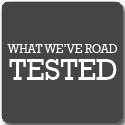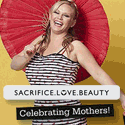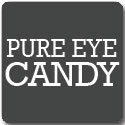|
|
Eco-friendly Fabrics
Want a better understanding of the fabrics showcased in our eco-friendly Spring fashion feature? Read on...
 Oeko-Tex (Eco-Tex) CottonInformation Source: The International Oeko-Tex AssociationThe Oeko-Tex Standard 100 was introduced in 1992 to offer consumers maximum security for their health and to alert companies in the textiles industry to the need to handle problematic substances responsibly. Today there is a reliable network of over 5000 manufacturers worldwide from all stages of the textile processing industry who are involved in a continuous certification process and thereby play an active part in steadily driving up safety standards for textiles that are not harmful to human health. Regular inspections of products on the market by authorized Oeko-Tex testing institutes further assure that manufacturers are in fact adhering to the human ecology standards demanded by the Oeko-Tex Label. An up-to-date list of manufacturers of certificated baby articles can be obtained from the German Oeko-Tex Certification Centre. Rompers, bibs and socks, and other items such as bedding, bed linen and soft toys are normally labelled with the Oeko-Tex Label on a tag or on the packaging. If this is not the case, it is certainly worth asking about the Oeko-Tex Standard 100 before buying. For over 10 years, the label “Confidence in textiles – tested for harmful substances according to Oeko-Tex Standard 100” has stood for security when buying textiles. The internationally binding test programme is based on sound scientific parameters and is updated annually in line with the latest findings (research, legislation). In particular it includes: • legally banned substances such as carcinogenic dyes • legally controlled substances such as formaldehyde, softeners, heavy metals or pentachlorophenol • substances which can be harmful to health such as pesticides, allergenic dyes or organic tin compounds • parameters such as colour-fastness and a skin-friendly pH value, intended to prevent health problems With over 36,000 certificates issued around the world for millions of individual products, the Oeko-Tex Standard 100 is the most successful quality mark of its kind. Oeko-Tex certificated items cover the whole range of clothing and home textiles, and offer the consumer all the benefits of modern textiles.  Global Organic Textile Standard (GOTS)Information Source: Oregon TilthThe OTCO fiber program certifies to the Global Organic Textile Standard GOTS), which is dedicated specifically for Fiber & Textile Handling and production. GOTS is a project of the International Working Group, who developed these consensus-based standards over many years of discussion and deliberation. The aim of the standard is to define requirements to ensure organic status of textiles, from harvesting of the raw materials, through environmentally and socially responsible manufacturing up to labeling in order to provide a credible assurance to the end consumer. The standards work to expand the potential organic supply chain and further developing global organic fiber and textile infrastructure. Each phase of organic fiber and textile production will require certification, in a system similar to the current organic food and feed organic certification process under the National Organic Program (NOP). The process of textile manufacturing goes through many diverse phases, often in different facilities, before it reaches its terminal industrial or consumer product. Consequently, all phases of production require evaluation by an organic certifier for trace ability and compliance with organic standards. The Global Organic Textile Standard (GOTS) is the new tool for an international common understanding of environmental friendly production systems and social accountability in the organic textile sector.  BabySoyInformation Source: BabySoy USABabysoy's baby layette line is designed by designer/mom, Amy and approved by her daughter, who refers to babysoy as her "comfy clothes". Using simple and fresh designs, babysoy has created a sustainable and modern baby wardrobe for eco-babies without sacrificing comfort or style. Most of all, it is made with nature's own ingredient - soybean protein fiber. Soybean Fiber: Soybean protein fiber is a sustainable and botanical textile fiber made from renewable and biodegradable natural resources - the leftover soybean pulp from tofu and soymilk production. Its 16 amino acids are healthy and nutritional for our skin. It is a green textile fiber that possesses the superiorities of many natural and synthesized fibers. From Soy to Fiber: 1. Proteins are extracted from the leftover materials of tofu or soymilk production. 2. Protein liquids are forced through a device resembling a showerhead, called a spinneret, to make liquid soy. This is called wet-spinning. 3. Liquid soy is solidified to make soybean protein fiber. After protein is extracted from the leftover soybean pulp, it can be used as fertilizer. All substances used in the production of soybean protein fiber are of a harmless nature (thus can be used as fertilizer). Benefits of Soy: Soybean fiber is a soft, light, and smooth protein fiber. It is smoother than cashmere and has the same moisture absorption as cotton but with a better moisture transmission, making it more comfortable on the skin. It is hydroscopic, air pervious, soft, smooth, dry and has superior warmth retention that’s comparable to wool. Non-GMO Beans: All soybeans are non-GMO (genetically modified organism) beans. Non-GMO soybeans cannot be treated or exposed to chemical pesticides during storage. Soy Fiber + Cotton: We combine the benefits of soybean protein fiber to cotton such as luster, moisture-permeability, quick-dry abiliy and drape while keeping our cost and your price reasonable and affordable. This is so that more parents can join in on the green movement and more babies can benefit from the healthy botanical textile fiber. In addition, soybean fiber is so soft that it needs a longer length fiber to build a structure for the super soft textile. Type of Cotton: Babysoy uses long-staple cotton also known as Sea-Island cotton from Xinjiang, China. Xinjiang's environment and climate pattern is ideal for cotton production partly due to its scarcity of pests in the region, which keeps down pesticides usage. Helping Our Environment: Babysoy’s baby and tots line are sustainable and eco-friendly. This is because soybean fiber is a textile that is made from recycled material and it does not add any extra burden to mother nature. Fairly Made: Babysoy puts endless efforts in offering parents an eco-friendly and affordable layettes line made by artisans who are fairly-treated in a safe working environment. Co-founders personally conducts unannounced factory inspection at least 4 times a year.  Organic CottonInformation Source: Global Organic Cotton Community PlatformOrganic cotton is cotton which is produced according to the internationally recognized organic farming standards of the EU regulation 2092/91, of the USA National Organic Program (NOP) or the Japanese Agricultural Standard (JAS). Organic cotton production does not simply mean replacing synthetic fertilizers and pesticides with organic ones. Organic cultivation methods are based more on a knowledge of agronomic processes than input-based conventional production are. The systemic approach aims to establish a diverse and balanced farming ecosystem which ideally includes all types of crops and farm activities. Farms need to complete a two-year conversion period to change their production system from conventional to organic. An essential element of organic production is the careful selection of varieties adapted to local conditions in terms of climate, soil and robustness to pests and diseases. Soil fertility management and crop nutrition are based on crop diversification and organic inputs such as compost, mulch and manures. Pest management measures focus essentially on pest prevention and the stimulation of a balanced agroecosystem through crop rotation, mixed cultivation, trap crops, and the use of natural pesticides when pest infestation rises above the economic threshold.  Bamboo FabricInformation Source: Babyjo BambooBamboo is said to be the fastest growing plant on earth. You may be surprised to find out that Bamboo is actually a grass, and not a tree. The type of bamboo used for making fabric (Moso) can grow anywhere from 30cms to 1.2m in a day (1-4ft) and is ready to harvest within 3-4 years! Because of its natural antibacterial properties, Bamboo does not require the use of fertilizers or pesticides to grow. With sufficient rainfall, there is no need for additional irrigation. Bamboo sends out an average of 4 to 6 new shoots a year, by way of natural regeneration of its extensive root system. Bamboo improves soil quality and aids in preventing erosion. When your bamboo clothing has finished its cycle as a garment, it can be returned to the earth as 100% biodegradable – a big plus for our planet! 
|

.jpg)
















